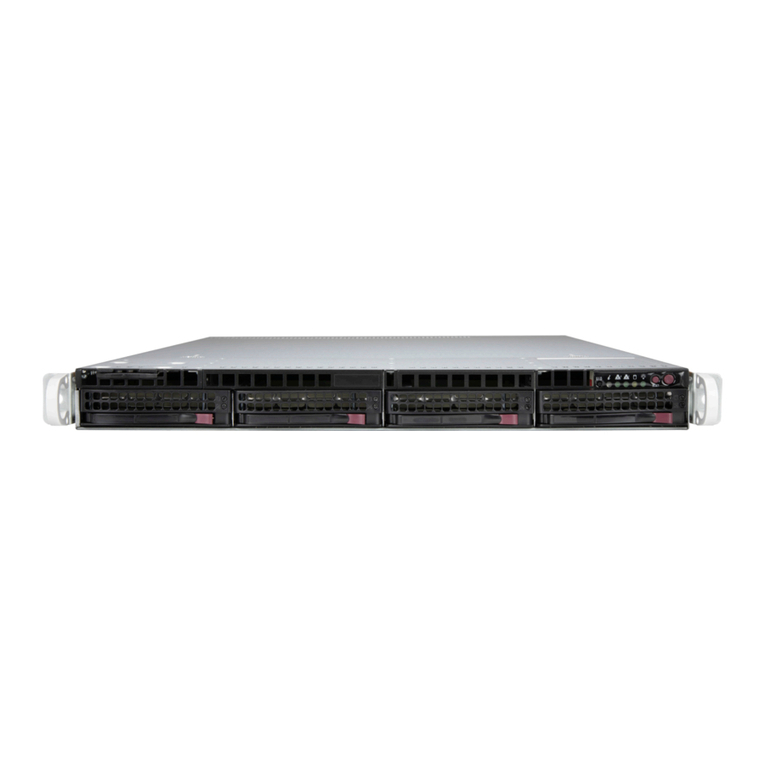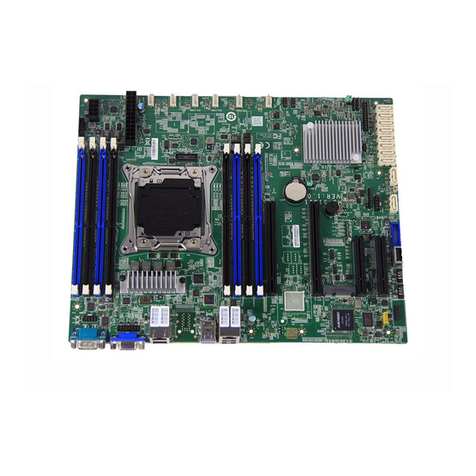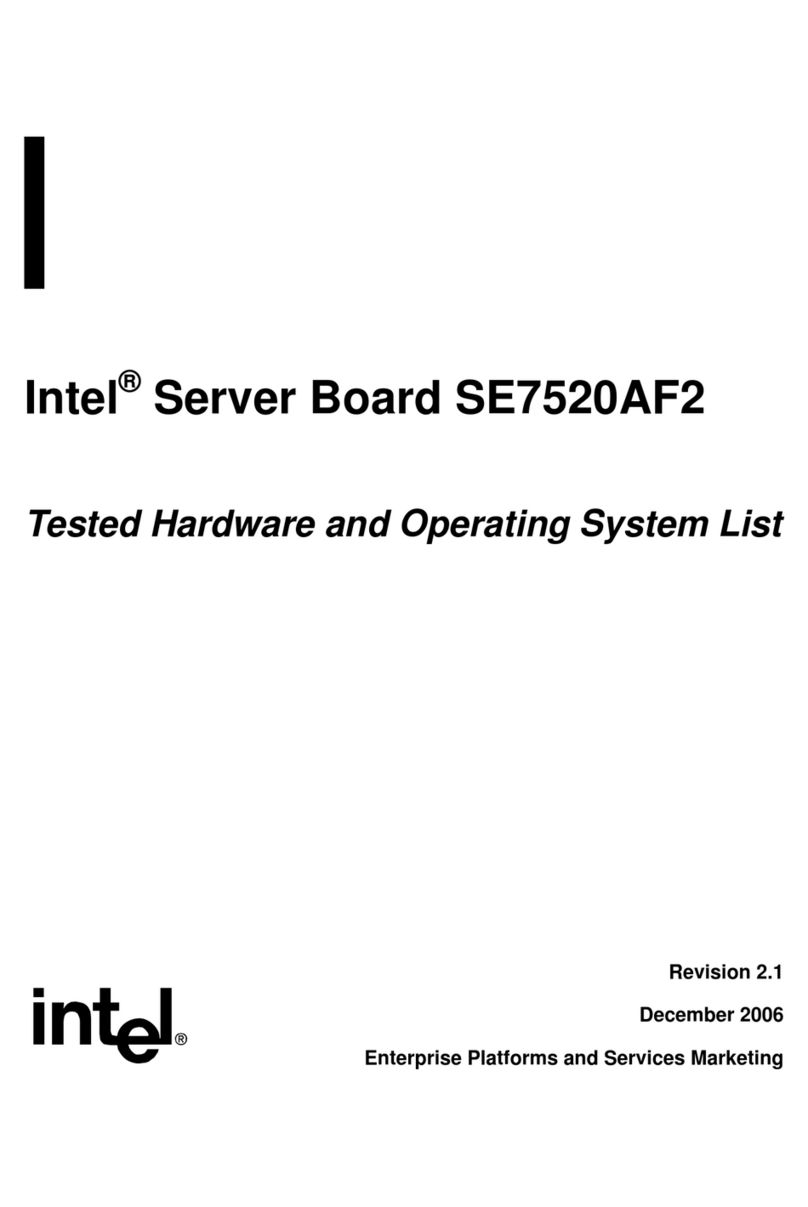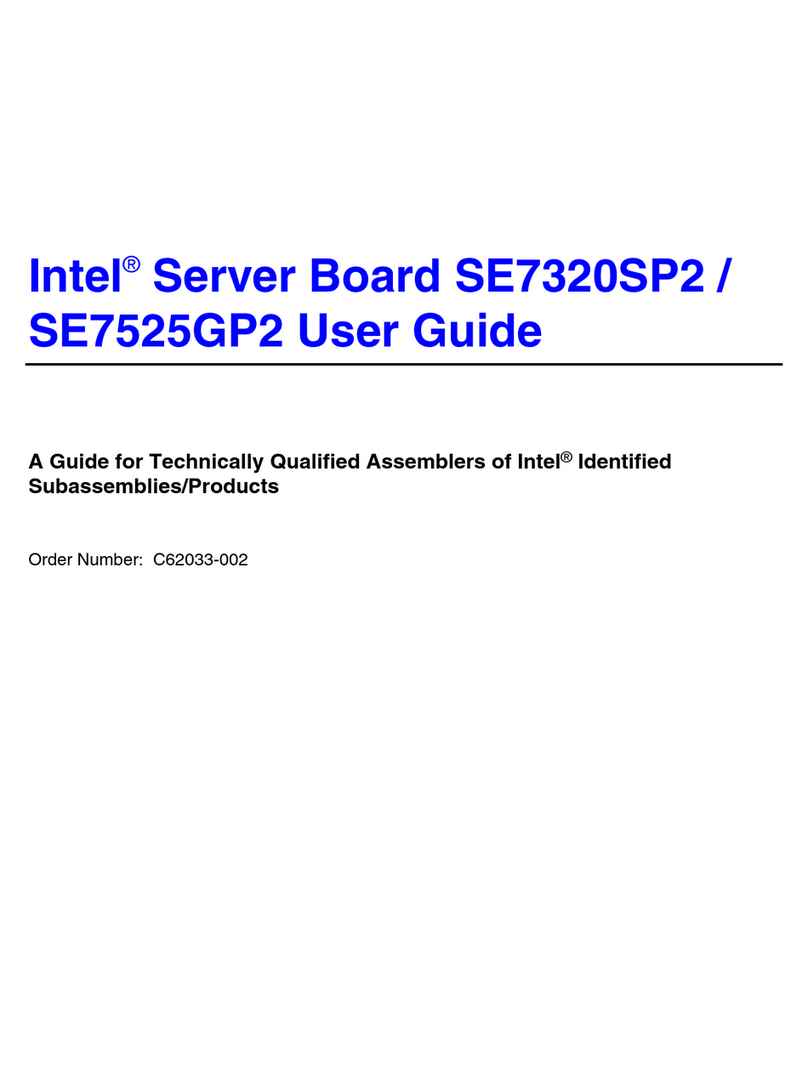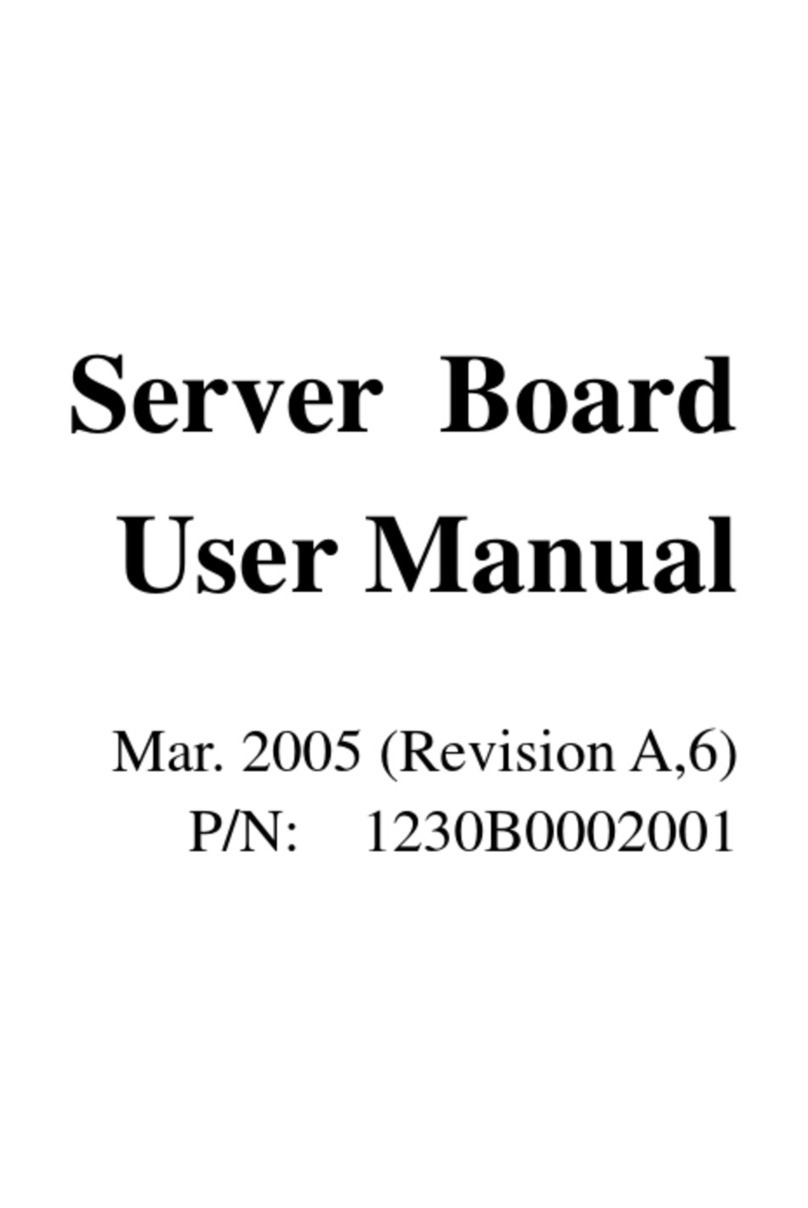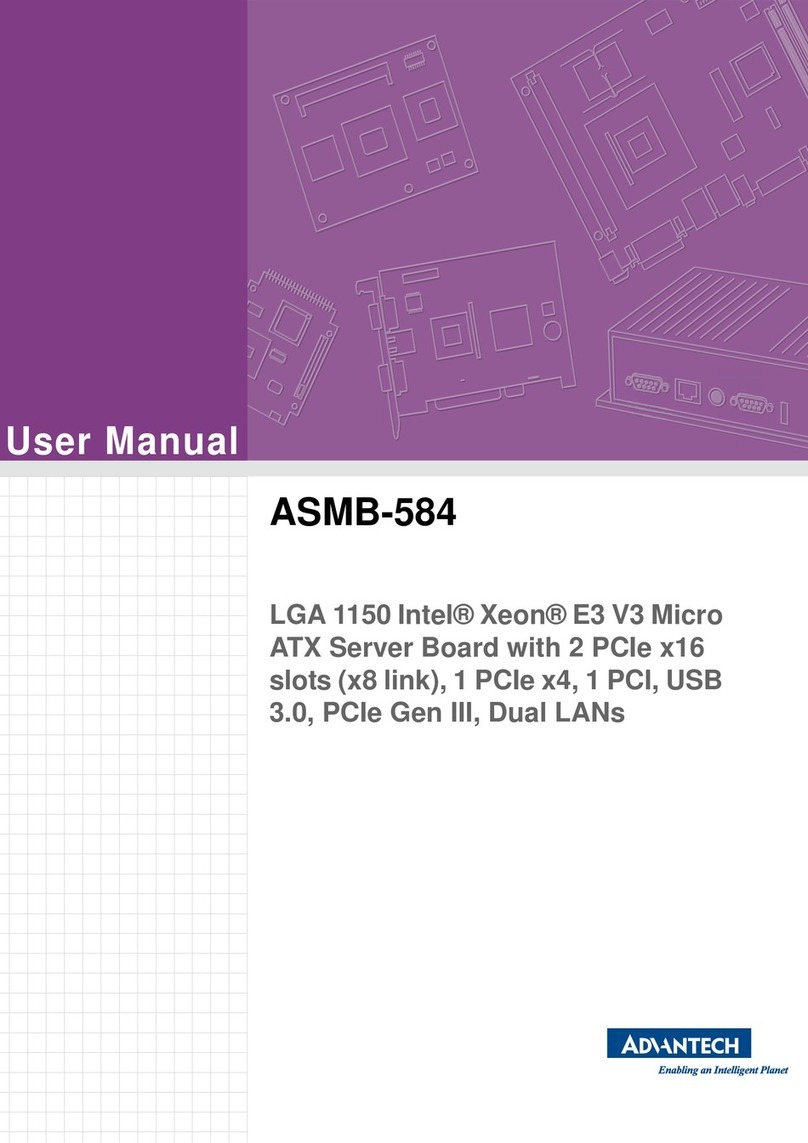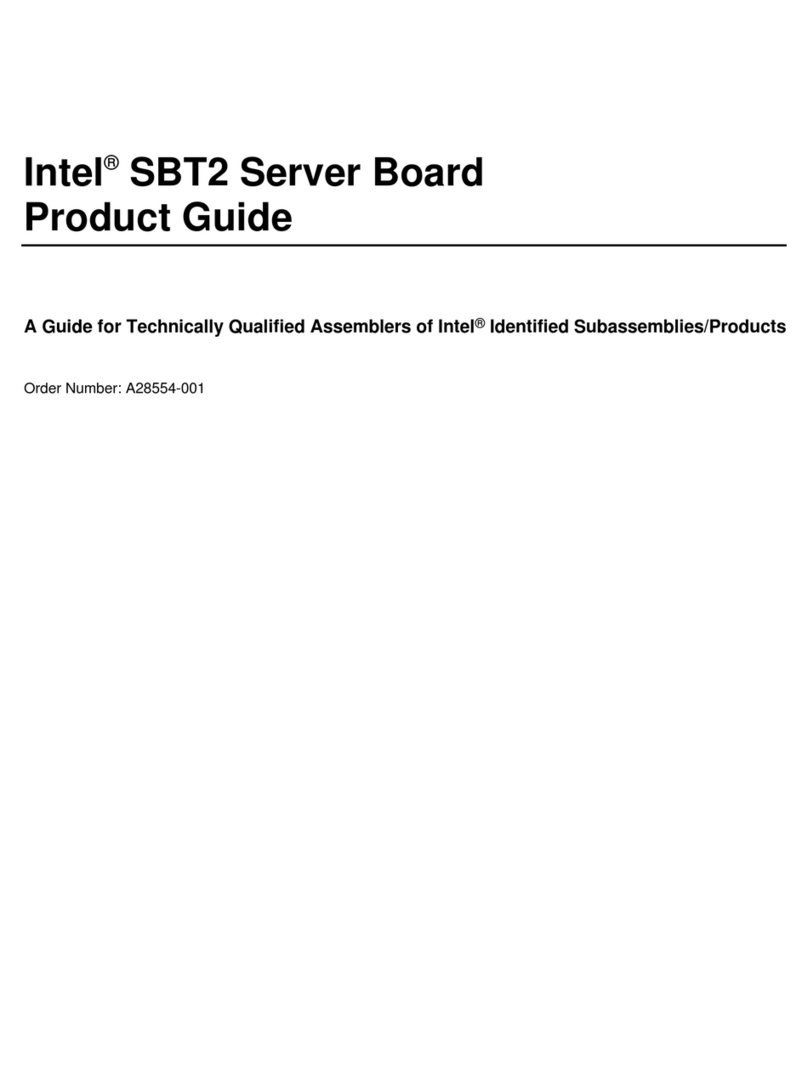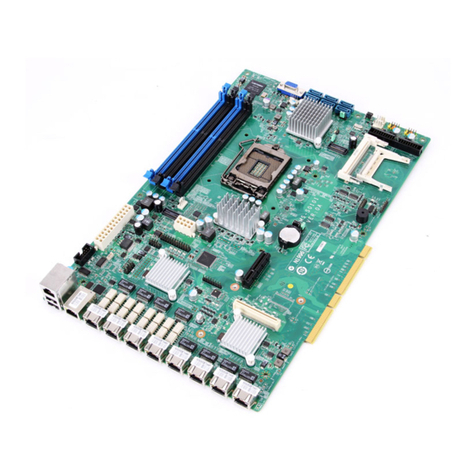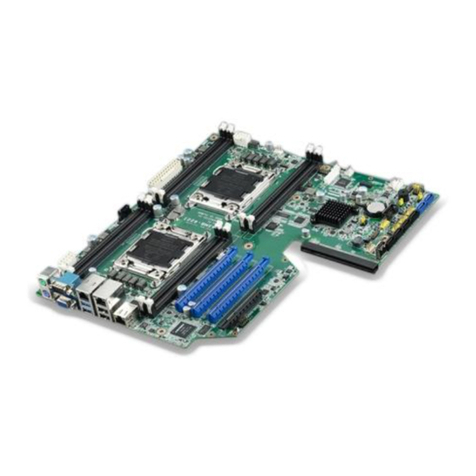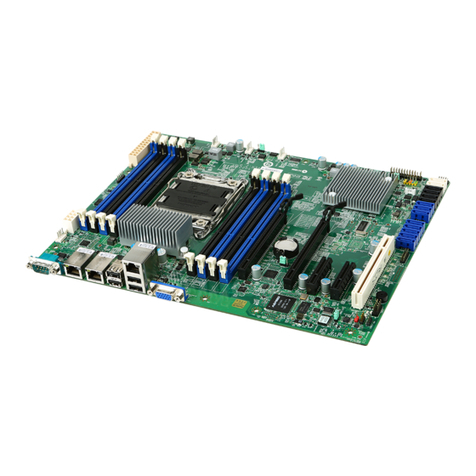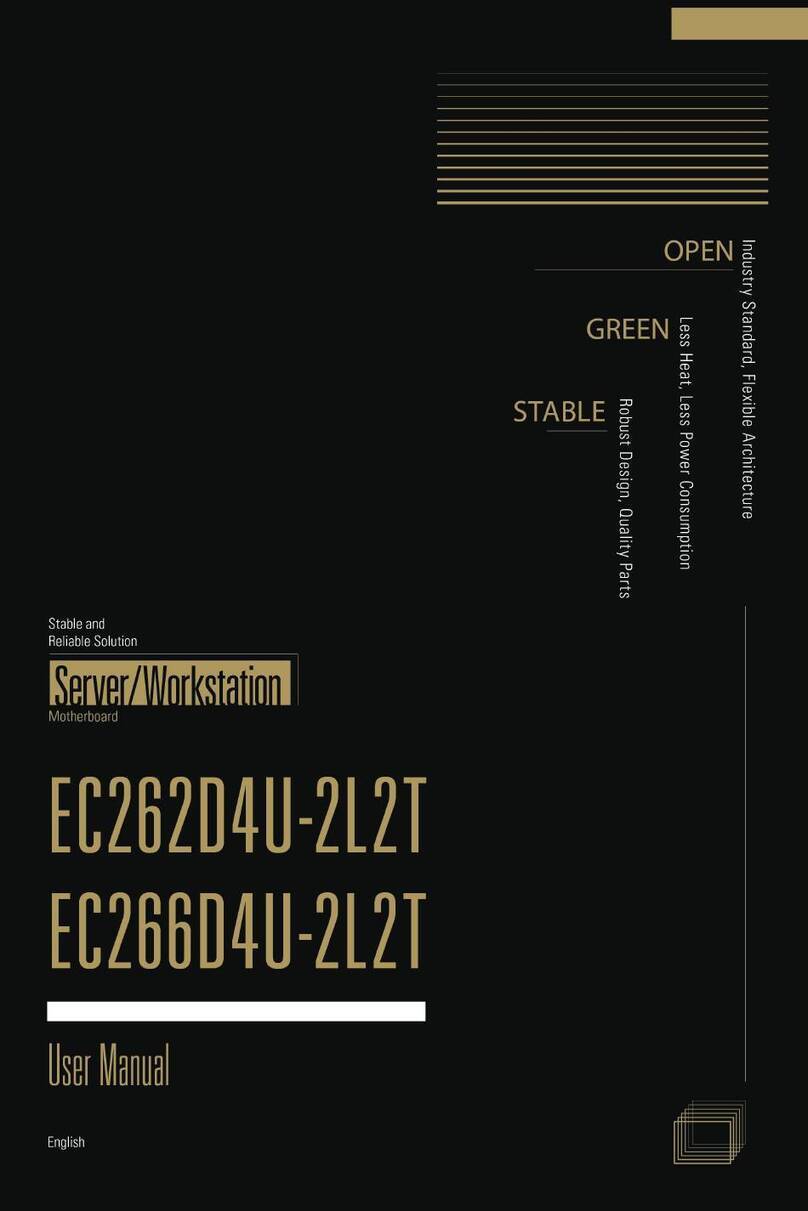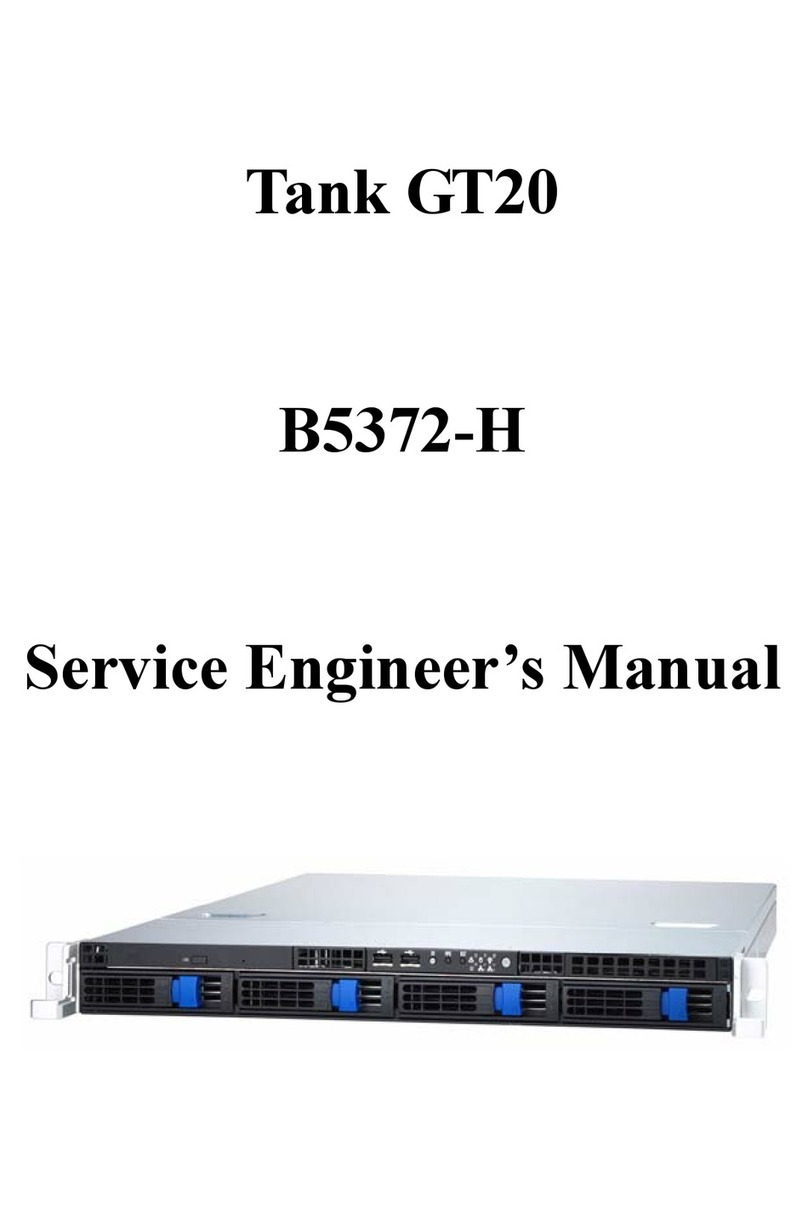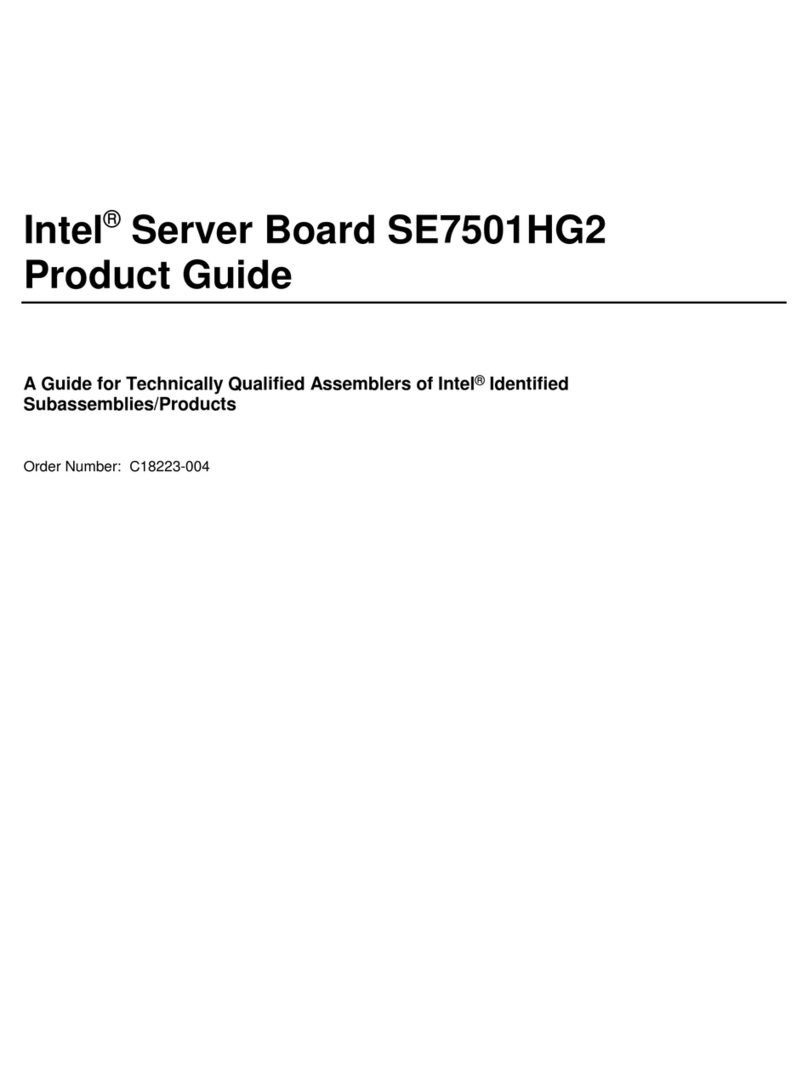General DataComm SpectraComm ADT Series User manual

The Best Connections in the Business
General DataComm
6SHFWUD&RPP#$'7#
Asynchronous Data Transport
Installation & Operation Manual
076R172-000
Issue 2
June 2004

Copyright
©2004 General DataComm, Inc. ALL RIGHTS RESERVED.
This publication and the software it describes contain proprietary and confidential information. No part of this
document may becopied, photocopied, reproduced, translated or reduced to any electronic or machine-readable
format without prior written permission of General DataComm,Inc. The information in this document is subject
to change without notice. General DataComm assumes no responsibility for any damages arising from the use
of this document, including but not limited to, lost revenue, lost data, claims by third parties, or other damages.
If you have comments or suggestions concerning this manual, please contact:
General DataComm, Inc.
Technical Publications
6 Rubber Avenue
Naugatuck, Connecticut USA 06770
Telephone: 1 203 729 0271
Trademarks
All brand or product names are trademarks or registered trademarks of their respective companies or
organizations.
Documentation
Revision History - GDC P/N 076R172-000
Related Publications
-REV is the hardware revision (-000,-001, etc.)
-VREF is the most current software version (-V600 is Version 6.0.0.)
In addition to the publications listed above, always read Release Notes supplied with your products.
Issue Date Description of Change
1 April 2004 Initial Release
2 June 2003 Enhancements and minor corrections
Description Part Number
SpectraComm/UAS Shelf and Enclosure Installation & Operation Manual 010R302-REV
SpectraComm 2000 Shelf Installation & Operation Manual 010R358-REV
SpectraComm 1001/1002 Enclosure Installation & Operation Manual 010R112-REV
SpectraComm IP Router Card Installation & Operation Manual 076R200-REV
SpectraComm V.F28.8/33.6 Modem Installation & Operation Manual 060R112-REV
SpectraComm V.34 Dual Modem Installation & Operation Manual 060R122-REV
SpectraComm Manager Card Installation & Operation Manual 048R303-REV
TEAM Core Software Operation Manual 058R720-VREF

076R172-000 SpectraCommADT i
Issue 2 Installation and Operation Manual
Table of Contents
Preface
Safety Information ................................................................................................................... iv
Compliance ............................................................................................................................... v
Support Services and Training............................................................................................... viii
Corporate Client Services.................................................................................................viii
Factory Direct Support & Repair .....................................................................................viii
Contact Information .........................................................................................................viii
Chapter 1: Introduction & Specifications
Product Overview .................................................................................................................. 1-1
Features & Benefits..........................................................................................................1-2
SC-ADT Interfaces/Connectivity.....................................................................................1-3
Throughput Performance..................................................................................................1-4
Diagnostics and Statistics.................................................................................................1-4
SC-ADT Security .............................................................................................................1-4
Management.....................................................................................................................1-5
Shelf / Enclosure Options ...................................................................................................... 1-6
SC-ADT Front Panel Interface.........................................................................................1-7
SC-ADT Applications Overview........................................................................................... 1-8
A Terminal Server Application........................................................................................1-9
A Transport Mode Application ......................................................................................1-10
A Contact Sense Application..........................................................................................1-11
Technical Specifications...................................................................................................... 1-12
Chapter 2: Installation & Connections
Overview................................................................................................................................ 2-1
Unpacking Instructions.....................................................................................................2-2
Installing the SC-ADT......................................................................................................2-3
Shelf and Card Connections................................................................................................... 2-4
Modem Connections.........................................................................................................2-4
Power-Up and Self-Test...................................................................................................2-4
Interface Port Descriptions...............................................................................................2-7
Chapter 3: SC-ADT Configuration
Configuration Overview ........................................................................................................ 3-1
Smart CLI Quick Reference.............................................................................................3-1
Initializing the SC-ADT for Configuration............................................................................ 3-2
Accessing the Command Line Interface...........................................................................3-3
Setting Up User Accounts................................................................................................3-3
Configuring SC-ADT for Typical Applications .................................................................... 3-4

ii SpectraCommADT 076R172-000
Installation and Operation Manual Issue 2
Table of Contents
Basic Configuration ......................................................................................................... 3-4
Interface Configuration....................................................................................................3-6
Ports Configuration.......................................................................................................... 3-7
Modem Configuration....................................................................................................3-11
Chapter 4: The Web Interface
Introduction to Web Management......................................................................................... 4-1
Web Management Requirements..................................................................................... 4-1
Starting A Web Session................................................................................................... 4-2
Command Line Web Screen............................................................................................ 4-3
Chapter 5: Additional Features
Overview of Additional Features .......................................................................................... 5-1
Time Protocols................................................................................................................. 5-1
TACACS+ Authentication Protocol................................................................................ 5-2
Contact Sense ........................................................................................................................ 5-6
Connection Controls.............................................................................................................. 5-8
Chat Communication............................................................................................................. 5-8
Telnet Menu Access .............................................................................................................. 5-9
Monitoring Features ............................................................................................................ 5-10
System Message Log .....................................................................................................5-10
Alarm Log......................................................................................................................5-10
Clear Functions..............................................................................................................5-11
SNMP Traps........................................................................................................................ 5-12
Appendix A:Application Guidelines
General Application Information.......................................................................................... A-1
Command Access Modes................................................................................................ A-1
Using Smart CLI................................................................................................................... A-6
Batch Up/Download Overview ............................................................................................ A-9
Troubleshooting Communications Problems ..................................................................... A-10

076R172-000 SpectraComm ADT iii
Issue 2 Installation and Operation Manual
Preface
Scope of this Manual
This manual describes how to install, configure and operate either model of the SpectraComm
Asynchronous Data Transport card: the SC-ADT 16-Port card or the SC-ADT 32-Port card. Both
models ofthe SC-ADT have the same operational capabilitiesexcept where noted. The information
contained in this manual has been carefully checked and is believed to be entirely reliable. This
information is intended for installers, service technicians and users and assumes a working
knowledge in the design, planning and management of IP networks.
As General DataComm improves the reliability, function, and design of their products, it is possible
that the information in this document may not be current. Contact General DataComm, your sales
representative or point your browser to http:\\www.gdc.com for the latest information on
this and other General DataComm products.
General DataComm, Inc.
6 Rubber Avenue
Naugatuck, Connecticut 06770 U.S.A.
Tel: 1 203 729-0271 Toll Free: 1 800 523-1737
Manual Organization
This manual is divided into the following chapters. When using the digital version of this manual,
click on any link (shown in blue text) to jump to that section.
•Chapter 1, Introduction & Specifications
describes the SpectraComm ADT features and options. This chapter contains an overview of
product design, intended use and technical specifications.
•Chapter 2, Installation & Connections
provides directions for installing the SC-ADT in a SpectraComm shelf system or enclosure.
•Chapter 3, SC-ADT Configuration
describes terminal, Telnet, and CLI interfaces used to configure and control the SC-ADT.
•Chapter 4, The Web Interface
describes the web-based (HTTP) interface and web-based CLI used to configure and control
the SC-ADT operation in a SpectraComm shelf.
•Chapter 5, Additional Features
describes the configuration or use of additional SC-ADT features, such as Time Protocols,
TACACS+ Authentication Protocol, Contact Sense, the Telnet Menu, System Message Log
and Alarm Log, SNMP Traps, and Connect/Disconnect Controls.
•Appendix A, Application Guidelines
provides useful information on SC-ADT factory defaults, access modes, the command line
interface and any special application considerations.

Preface Safety Information
iv SpectraCommADT 076R172-000
Installation and Operation Manual Issue 2
Safety Information
This manual should be read in its entirety and all procedures completely understood before
installing or operating the unit, including all notes, cautions and warnings (examples below). The
CAUTION, WARNING, and DANGER statements that appear throughout this manual are
intended to provide critical information for the safety of both the service engineer and operator.
These statements also enhance equipment reliability. The following definitions and symbols for
CAUTION, WARNING, and DANGER as they are used comply with ANSI Z535.2, American
National Standard for Environmental and Facility Safety Signs, and ANSI Z535.4, Product Safety
Signs and Labels, issued by the American National Standards Institute. .
Safety Guidelines
• Always use caution and common sense, especially when unsafe conditions or potentially
hazardous voltages are present.
• Repairs must be performed by qualified service personnel only.
• To reduce the risk of electrical shock, do not operate equipment with the cover removed.
• Never install telephone jacks in a wet location unless the jack is designed for that location.
• Never touch uninsulated telephone wires or terminals unless the telephone line is
disconnected at the network interface.
• Never install telephone wiring during an electrical storm.
Antistatic Precautions
This product may contain static-sensitive devices that are easily damaged by ESD (electrostatic
discharge). ESD occurs when a person whose body has built up static electricity touches a computer
component. ESD can cause computer components to fail. Take proper handling, grounding and
precautionary ESD measures when installing parts or cards. Keep parts and cards in antistatic
packaging when not in use or during transport. If possible, use antistatic pads on floor and
workbench. When handling components, always use an antistatic wrist strap connected to a
grounded equipment frame or chassis. If a wrist strap is not available, periodically touch an
unpainted metal surface on the equipment. Never use a conductive tool, like a screwdriver or a
paper clip, to set switches.
Note Indicates a note. It is something you should be particularly aware of; something not readily apparent.
A note is typically used as a suggestion.
Important Indicates an emphasized note. It is something you should be particularly aware of; something not readily
apparent. Important is typically used to prevent equipment damage.
CAUTION indicates conditions or practices that can cause damage to equipment or loss of
data.
WARNING indicates an imminently hazardous situation which, if not avoided, may result
in minor to moderate injury. It may also be used to alert against unsafe practices.
DANGER indicates an imminently hazardous situation which, if not avoided, will result in
death or serious injury.

Preface Compliance
076R172-000 SpectraComm ADT v
Issue 2 Installation and Operation Manual
Compliance
FCC Part 68 (Drop-In Modem)
1. This equipment complies with Part 68 of the Federal Communications Commission Rules.
On the outside surface of this equipment is a label that contains, among other information,
the FCC registration number. This information must be provided to the telephone company.
2. The suitable USOC jack (Universal Service Order Code connecting arrangement) for this
equipment is shown below. If applicable, the facility interface codes (FIC) and service order
codes (SOC) are shown.
3. An FCC-compliant telephone cord and modular plug is provided with this equipment. This
equipment is designed to be connected to the telephone network or premises wiring using a
compatible modular jack that is Part 68 compliant.
4. The ringer equivalence number (REN) is used to determine the number of devices that may
be connected to the telephone line. Excessive RENs on the telephone line may result in the
device not ringing in response to an incoming call. In most, but not all, areas the sum of the
RENs should not exceed 5.0. To be certain of the number of devices that may be connected
to the line, as determined by the total RENs, contact the local telephone company.
5. If this equipment causes harm to the telephone network, the telephone company will notify
you in advance that temporary discontinuance of service may be required. But if advance
notice is not practical, the telephone company will notify you as soon as possible. Also, you
will be advised of your right to file a complaint with the FCC if you believe it is necessary.
6. The telephone company may make changes in its facilities, equipment, operations, or
procedures that could affect the operation of the equipment. If this happens, the telephone
company will provide advance notice in order for you to make necessary modifications in
order to maintain uninterrupted service.
7. If trouble is experienced with this equipment (the model of which is indicated below) please
contact Multi-Tech Systems, Inc. at the address shown below for details of how to have
repairs made. If the trouble is causing harm to the telephone network, the telephone
company may request you remove the equipment from the network until the problem is
resolved.
8. No repairs are to be made by you. Repairs are to be made only by Multi-Tech Systems or its
licensees. Unauthorized repairs void registration and warranty.
9. This equipment should not be used on party lines or coin lines.
10. If so required, this equipment is hearing aid compatible.
Manufacturer:
Trade Name:
Model Number:
FCC Registration No:
Ringer Equivalence:
Modular Jack (USOC):
Service Center in USA:
Multi-Tech Systems
ModemModule
MT5634SMI
AU7-USA-25814-M5-E
0.3B
RJ11C or RJ11W (single line)
Multi-Tech Systems, Inc.
2205 Woodale Drive
Mounds View, MN 55112
U.S.A.
Tel: (763)785-3500; Fax: (763) 785-9874

Preface Compliance
vi SpectraCommADT 076R172-000
Installation and Operation Manual Issue 2
FCC Part 15 (Pending)
This device complies with Part 15 of the FCC rules. Operation is subject to the following
conditions:
1. This device may NOT cause harmful interference, and
2. This device must accept any interference received, including interference that may cause
undesired operation.
Industry Canada Notification
The Industry Canada label identifies certified equipment. This certification means that the
equipment meets telecommunications network protective, operation and safety requirements as
prescribed in the appropriate Terminal Equipment Technical Requirements document(s). The
Department does not guarantee the equipment will operate to the user's satisfaction.
Before installing this equipment, users should ensure that it is permissible to be connected to the
facilities of the local telecommunications company. The equipment must also be installed using an
acceptable method of connection. The customer should be aware that compliance with the above
conditions may not prevent degradation of service in some situations.
Repairsto certified equipment should be coordinated by a representative designated by the supplier.
Any repairs or alterations made by the user tothis equipment, or equipmentmalfunctions, may give
the telecommunications company cause to request the user to disconnect the equipment.
Users should ensure for their own protection that the electrical ground connections of the power
utility, telephone lines and internal metallic water pipe system, if present, are connected together.
This precaution may be particularly important in rural areas.
Caution: Users should not attempt to make such connections themselves, but should contact the
appropriate electric inspection authority, or electrician, as appropriate.
Notice: The Ringer Equivalence Number (REN) assigned to each terminal device provides an
indication of the maximum number of terminals allowed to be connected to a telephone interface.
The termination on an interface may consist of any combination of devices subject only to the
requirement that the sum of the Ringer Equivalence Numbers of all the devices does not exceed 5.
Avis D’industrie Canada
L’étiquette d’Industrie Canada identifie le matériel homologué. Cette étiquette certifie que le
matériel est conforme aux normes de protection, d’exploitation et de sécurité des réseaux de
télécommunications, comme le prescrivent les documents concernant les exigences techniques
relatives au matériel terminal. Le Ministère n’assure toutefois pas que le matériel fonctionnera à la
satisfaction de l’utilisateur.
Avant d’installer ce matériel, l’utilisateur doit s’assurer qu’il est permis de le raccorder aux
installations de l’entreprise locale de télécommunication. Le matériel doit également être installé en
suivant une méthode acceptée de raccordement. L’abonné ne doit pas oublier qu’il est possible que
la comformité aux conditions énoncées ci-dessus n’empêche pas la dégradation du service dans
certaines situations.
Les réparations de matériel homologué doivent être coordonnées par un représentant désigné par le
fournisseur. L’entreprise de télécommunications peut demander à l’utilisateur de débrancher un
appareil à la suite de réparations ou de modifications effectuées par l’utilisateur ou à cause de
mauvais fonctionnement.

Preface Compliance
076R172-000 SpectraComm ADT vii
Issue 2 Installation and Operation Manual
Pour sa propre protection, l’utilisateur doit s’assurer que tous les fils de mise à la terre de la source
d’énergie électrique, des lignestéléphoniqueset des canalisationsd’eau métalliques,s’il y ena, sont
raccordés ensemble. Cette précaution est particulièrement importante dans les régions rurales.
Avertissement: L’utilisateur ne doit pas tenter de faire ces raccordements lui-même; il doit avoir
recours à un service d’inspection des installations électriques, ou à un électricien, selon le cas.
Avis: L’indice d’équivalence de la sonnerie (IES) assigné à chaque dispositif terminal indique le
nombre maximal de terminaux qui peuvent être raccordés à une interface. La terminaison d’une
interface téléphonique peut consister en une combinaison de quelques dispositifs, à la seule
condition que la somme d’indices d’équivalence de la sonnerie de tous les dispositifs n’excède
pas 5.
Electromagnetic Compatibility
This Class A digital apparatus complies with FCC Part 15 and Canadian ICES-003.
La Compatibilité d’ Eléctro-magnetique
Cet appareil numerique de la classe A est conforme a la norme NMB-003 du Canada.
NEBS Compliance (Pending)
Designed to be compliant to the following NEBS standards:
GR63 - Physical Protection
GR78 - ESD
GR1089 - EMC and Safety

Preface Support Services and Training
viii SpectraCommADT 076R172-000
Installation and Operation Manual Issue 2
Support Services and Training
GeneralDataCommofferstwocomprehensivecustomersupportorganizations dedicatedtopre-and
post-sale support services and training for GDC products. Corporate Client Services and Factory-
Direct Support & Repair assist customers throughout the world in the installation, management,
maintenance and repair of GDC equipment. Located at GDC’s corporate facility in Naugatuck,
Connecticut USA, these customer support organizations work to ensure that customers get
maximum return on their investment through cost-effective and timely product support.
Corporate Client Services
Corporate Client Services is a technical support and services group that is available to GDC
customers throughout the world for network service and support of their GDC products. Customers
get thereliable support and training required for installation, management and maintenance of GDC
equipment in their global data communication networks. Training courses are available at GDC
corporate headquarters in Naugatuck, Connecticut, as well as at customer sites.
Factory Direct Support & Repair
GDC provides regularand warranty repair services through Factory Direct Support & Repair at its
U.S. headquarters in Naugatuck, Connecticut. This customer support organization repairs and
refurbishes GDC products, backed by the same engineering, documentation and support staff used
to build and test the original product. Every product received for repair at Factory Direct Support
& Repair is processed using the test fixtures and procedures specifically designed to confirm the
functionality of all features and configurations available in the product.
As part of GDC’s Factory Direct program, all product repairs incorporate the most recent changes
and enhancements from GDC Engineering departments, assuring optimal performance when the
customer puts the product back into service. Only GDC’s Factory Direct Support & Repair can
provide this added value.
Contact Information
General DataComm, Inc.
6 Rubber Avenue
Naugatuck, Connecticut 06770 USA
Attention: Corporate Client Services
Telephones: 1 800 523-1737
1 203 729-0271
Fax: 1 203 729-3013
Email: c[email protected]m
General DataComm, Inc.
6 Rubber Avenue
Naugatuck, Connecticut 06770 USA
Attention: Factory Direct Support & Repair
Telephones: 1 800 523-1737
1 203 729-0271
Fax: 1 203 729-7964
Email: factorydirect@gdc.com
Hours of Operation:
Monday - Friday 8:30 a.m. - 5:00 p.m. EST
(excluding holidays)
http://www.gdc.com

076R172-000 SpectraComm ADT 1-1
Issue 2 Installation and Operation Manual
Chapter 1: Introduction &
Specifications
Product Overview
The SpectraComm Asynchronous Data Transport
(SC-ADT) is designed primarily for terminal server
applications and for asynchronous data transport over
private IP networks.
As a Terminal Server device, the SC-ADT manages
remote equipment via their craft ports from anywhere in
the network. As an Async Data Transport device, the
SC-ADT encapsulates async data traffic onto Ethernet
facilities.
The SC-ADT also provides multi-level password
protection and ethernet access features that enhance the
security of the customer’s network.
This manual describes two models of the device: the SC-
ADT 16-port card and the SC-ADT 32-port card. Both
cards operate in the same manner, except where noted.
SC-ADT 16-Port Device
The SC-ADT 16-port card is a single-width, 7-inch by
9.5-inch (178 mm by 241 mm) printed circuit card that
provisions 16 async ports via the two front panel
connector assemblies. The SC-ADT can use any single
slot in any SpectraComm shelf or enclosure.
SC-ADT 32-Port Device
The SC-ADT 32-port card consists of two printed circuit
cards fastened together: the SC-ADT 16-port card and
the SC-ADT Expansion card. Together, the 7-inch by
9.5-inch (178 mm by 241 mm) cards can provision 32
async ports via the four front panel connector
assemblies.The SC-ADT 32-port device occupies two
adjacent slots in the SpectraComm 5000 shelf or the
SpectraComm MultiPak enclosure.
1
8
2
3
4
5
6
7
ON
AL
IN
TM
ENET
1
MDM
1
MDM
2
9
16
10
11
12
13
14
15
SC ADT
1-8
9-16
PORT
1
8
2
3
4
5
6
7
ON
AL
IN
TM
ENET
1
MDM
1
MDM
2
9
16
10
11
12
13
14
15
SC ADT
1-8
9-16
PORT
17
24
18
19
20
21
22
23
ENET
2
ENET
3
25
32
26
27
28
29
30
31
SC ADT
EXPAN
17-24
25-32
PORT
SC-ADT
16-PORT DEVICE
(1 Card, 1 Slot)
SC-ADT
32-PORT DEVICE
(2 Cards, 2 Slots)

Introduction & Specifications Product Overview
1-2 SpectraComm ADT 076R172-000
Installation and Operation Manual Issue 2
Features & Benefits
• Provides authenticated, high performance, low-cost transfer of async data between sites
utilizing IP networks.
• Scalable, individually configurable ports in 16- or 32-port increments.
• Acts as a terminal server to connect local craft devices, allowing management from anywhere
in the network via Telnet access or optionally via modem Dial-In access.
• Provides alarm reporting for contact sensing and alarm traps.
• Supports LAN connection to 10/100Base-T Ethernet.
• Supports efficient configuration of multiple SC-ADT devices via ASCII batch file upload/
download.
• Provides EIA lead status for each port.
• Disconnect/connect controls for each port.
• Diagnostics for async loopbacks, ping and statistics.
• Employs GDCs “Smart CLI,” an interactive command line interface, and a web-based CLI
interface.
• Ethernet port auto-negotiates for 10 or 100 Mbps port speed, full- or half-duplex modes and
enabled/disabled flow control.
• Ethernet port auto-senses (HP MID/X) for straight-thru or crossover cable connections.
• High performance “run from ram” architecture includes a running version, a primary version
and standby version of software.
• Provides a DB25 connector for Contact Sense and as a console port for local management.
• Supports remote management using standards-based IP protocols including Telnet, TFTP, and
HTTP (Web).
• Supports discovery, statistics, and alarm traps using standards-based SNMP.
• Provides support for two external or integral modems for dial-in access.
• Supports multi-level password protection for added security.
• Supports TACACS+ authentication for centralized username and password administration.
• Software upgradable via TFTP, allowing quick bug fixes and feature enhancements over time.
• Low power consumption (6 watts maximum per slot).
• Designed for NEBS Level III compliance.
• Chat Call/Chat Hello protocol allows text communication between two users.
Future Enhancements
In a future release, the SC-ADT will provide contact outputs between network locations.

Introduction & Specifications Product Overview
076R172-000 SpectraComm ADT 1-3
Issue 2 Installation and Operation Manual
SC-ADT Interfaces/Connectivity
The typical installation environment for the SC-ADT device is a SpectraComm 5000 shelf,
SpectraComm 2000 shelf, SpectraComm MultiPak enclosure or the SpectraComm 1001/1002
standalone enclosures. In these shelf/enclosure systems, the SC-ADT provides multiple physical
interfaces, described below. The SC-ADT is shipped from the factory with all ports set to
Disabled except for the modem line port.
Note Refer to Figure 2-1 for detailed views and information on rear panel connections to the SC-ADT in the
various GDC shelves and enclosures.
Craft Port/Contact Sense
The rear panel DB25 craft port can be used for local configuration and monitoring. This RS-232
interface is fixed as serial async 9600 baud, 8 data, 1 start/stop, noparity. The DB25 connector also
provides the Contact Sense connections.
Ethernet 10/100BASE-TX LAN Ports (Logical E0)
At the shelf/enclosure rear panel, a RJ45 connector provides the Ethernet (LAN) interface for
connecting the SC-ADT to any standard 10/100B-T LAN device, including PCs, servers, hubs and
switches.
Modem Ports (M0 and M1)
The SC-ADT supports up to two external GDC SpectraComm V.34 modems connected to async
Port1 and Port2 for up to two Terminal Emulation (Hyperterm) or Dial-Up Networking (PPP)
sessions. The external modems supply phone line connectivity. For more information about these
external modems (SC V.F 28.8/33.6 or SC V.34 Dual) refer to the associated GDC manuals.
If so equipped, the SC-ADT can provide internal modems that allow Dial-Up connections for up to
two Terminal Emulation (Hyperterm) or Dial-Up Networking (PPP) sessions. At the shelf/
enclosure rear panel, a RJ45 connector provides the modem/line interface for the internal modems.
Terminal Server/Transport Ports (Ports 1 - 32)
ThefrontpanelD-type 68-pinconnectorassembliesprovide16 or 328-wireRS-232terminalserver
ports which can connect up to 32 devices simultaneously. If Telnet cut-thru is used, theTelnet ports
2001 - 2032 correspond to Port1 - Port32, respectively, and to Terminal Server menu items. When
ports are configured for transport, async dataat any port can be transported to any async port at any
remote SC-ADT location using TCP.

Introduction & Specifications Product Overview
1-4 SpectraComm ADT 076R172-000
Installation and Operation Manual Issue 2
Throughput Performance
Typical Throughput Conditions
It is expected that the traffic patterns of typical applications will be bursty in nature, thereby allowing
all sixteen or thirty-two async ports to deliver data without loss under typical traffic conditions.
End-to-End Flow Control
The SC-ADT implements flow-control between the async end-devices to avoid buffer overflow and
data loss during extreme traffic conditions. End devices that respond to hardware/software flow
control will hold-off data transmissions to avoid traffic loss.
Worst-case Throughput Conditions
During extreme traffic conditions, the SC-ADT will handle an aggregate rate of 800,000 bits per
second, full duplex. This translates to 50,000 bits per second per port if using sixteen async ports
and 25,000 bits per second per port if using thirty-two async ports.
Note Extreme traffic conditions are defined as continuous async data (i.e. “non-bursty”) with end-to-end flow-
control required.
Diagnostics and Statistics
• Generates/answers pings
• Tests Contact States
• Loopbacks on Async ports
• Transmit and Receive packet counts on Ethernet interface
• Transmit and Receive byte counts on Ethernet interface
• Transmit and Receive character counts on Async ports
SC-ADT Security
SC-ADT devices are multi-level password-protected and also provide inactivity timers. For periods
of heightened security, authorized users can configure access controls to filter out specific
protocols, such as HTTP, SNMP and/or TFTP access to the unit.

Introduction & Specifications Product Overview
076R172-000 SpectraComm ADT 1-5
Issue 2 Installation and Operation Manual
Management
Smart CLI
The SC-ADT employs an interactive command line interface that will feel familiar to most field
personnel. Added features include auto-prompting for command arguments, recognition of
abbreviated commands, online help, command line recall and an advanced utility for generating
downloadable ASCII configuration files.
Enhanced Telnet Management
SC-ADT provides enhanced Telnet “cut-thru” to up to 32 craft devices via the front panel terminal
server connectors. Using a single IP address, remote devices can be accessed by a TCP port number
(2001 - 2032) or by selecting from user-defined device descriptions at the Terminal Server menu.
Remote Dial-Up Management
The SC-ADT can be managed via a password-protected dial-up connection from the PSTN when it
is connected to one or two externalGDC V.34 modems atPort 1 and/or Port2. Dial-up management
is also available through two integral modems when the SC-ADT device is so equipped from the
factory. The SC-ADT supports simultaneous dial-up management sessions via internal or external
modems.
Web Management
The SC-ADT supports direct web management via HTTP for internet-ready network monitoring.
An embedded web server agent allows Read or Read-Write access to the SC-ADT using popular
browsers. To enhancesecurity, theSC-ADT supports web time-outsand password-protected access
over the web interface. HTTP services can also be disabled to block web access to SC-ADT devices.
SNMP Management
An embedded SNMP agent allows discovery, retrieval of statistics, alarm traps and Read access to
SC-ADT using any standard SNMP controller. SNMP access can be disabled to avoid hacks during
intervals of heightened security.
Note SNMP support will not require a SpectraComm Manager (SCM) card co-located in the shelf.
TEAM Management
(Future Release)
This release of the SC-ADT supports auto-discovery and polling by GDC’s TEAM software (Total
Enterprise Access Management. TEAM uses HPOV APIs (Application Programmer Interfaces) to
integrate with HP OpenView Windows and other network management applications. In a future
release, the SC-ADT will be able to launch a direct Telnet or web-based CLI session from the map
window. For more information on the availability and operation of these additional features, refer
to later issues of this document or contact your GDC Sales Representative.
Note TEAM support requires an SCM card at version 5.80 or greater and co-located in the shelf with the SC-ADT.
For more information, refer to the GDC TEAM Core documentation and Release Notes.

Introduction & Specifications Shelf / Enclosure Options
1-6 SpectraComm ADT 076R172-000
Installation and Operation Manual Issue 2
Shelf / Enclosure Options
Figure 1-1 shows SC-ADT 16- and 32-port devices installed in GDC’s flexible and scalable high
density SpectraComm shelves and enclosures, along with other compatible product cards.
Compatible products include: the SCM card, SC-IP router cards, SC V.F 28.8 and SC V.34 Dual
modems, as well as SpectraComm data set emulators and line terminating units.
The SC-ADT 16-port can also be installed in low density SC 2000 shelves or SC 1001 enclosures.
Refer to Chapter 2, Installation & Connections or to SpectraComm shelf/enclosure manuals as
needed.
Figure 1-1 Shelf/Enclosure Configurations
SPECTRACOMM 2000
SC 2000 SHELF
SLOTS 1-2
POWER
SUPPLY
POWER ON
General DataComm
SC-ADT 16-PORT
General
DataComm
SC 5000 SHELF
SLOTS 1-16
SC MULTIPAK ENCLOSURE
SLOTS 1-10
SC 1001/1002 ENCLOSURE
NETWORK ELEMENT
SC-ADT 16-PORT
AND
SC-ADT 32-PORT
INSTALLATIONS
SC-ADT 16-PORT
INSTALLATIONS
ONLY
SCM
SC V.34 DUAL MODEM
GPS-11
POWER
SUPPLY
POWER
ON
FAIL
POWER
ON ( | )
OFF (0)
GPS-11
POWER
SUPPLY
POWER
ON
FAIL
POWER
ON ( | )
OFF (0)
SC-IP
SC V.34 DUAL MODEM
SCM
SC V.34 DUAL MODEM
SC ADT SC ADT
EXPAN
SC ADT 32-PORT
SC ADT SC ADT
EXPAN
SC ADT 32-PORT
SC ADT SC ADT
EXPAN
SC ADT 32-PORT
SC ADT SC ADT
EXPAN
SC ADT 32-PORT
SC ADT SC ADT
EXPAN
SC ADT 32-PORT
SC ADT SC ADT
EXPAN
SC ADT 32-PORT
SC ADT SC ADT
EXPAN
SC ADT 32-PORT
SC ADT SC ADT
EXPAN
SC ADT 32-PORT
SC ADT SC ADT
EXPAN
SC ADT 32-PORT
SC ADT SC ADT
EXPAN
SC ADT 32-PORT
SC ADT
SC ADT 16-PORT
SC-IP ROUTER

Introduction & Specifications Shelf / Enclosure Options
076R172-000 SpectraComm ADT 1-7
Issue 2 Installation and Operation Manual
SC-ADT Front Panel Interface
Port LEDs indicate the activity and/or status of the device, the ethernet interfaces, and of the
individual ports. LED states vary depending on whether the port is configured as a terminal server
port or for transport. The table below describes the LED states.
Note The SC-ADT 32-port device (not shown) provides an additional ethernet interfaces (ENET 1, 2 and 3), and
provides an additional 16 ports (17 -32). The LEDs operated in the same manner as described above.
Table 1-1 Front Panel Connectors and Indicators (Shown SC-ADT 16-Port)
SC-ADT Front
Panel Description
ON / AL Steady GREEN indicates power is supplied to the unit.
(Future Use)
Steady RED indicates a major alarm condition.
IN / TM Steady GREEN indicates the device is in service.
Steady RED indicates one or more ports in test mode. The port(s)
in test mode will also illuminate RED.
MDM 1 or 2 Steady GREEN indicates modem is connected.
Flashing GREEN indicates modem is passing data.
ENET 1 Steady GREEN indicates the associated ethernet link is up.
LED OFF indicates the associated ethernet link is down.
Flashing GREEN indicates the associated ethernet link is
receiving/transmitting data.
PORTS 1-16 Steady GREEN when port is enabled.
Flashing GREEN when port is passing data.
LED OFF when async port is disabled.
Steady RED when port is in test mode.
(Future Use)
Steady RED when port is in alarm state.
Flashing RED for failure.
1
8
2
3
4
5
6
7
ON
AL
IN
TM
ENET
1
MDM
1
MDM
2
9
16
10
11
12
13
14
15
SC ADT
1-8
9-16
PORT

Introduction & Specifications SC-ADT Applications Overview
1-8 SpectraComm ADT 076R172-000
Installation and Operation Manual Issue 2
SC-ADT Applications Overview
The SpectraComm Asynchronous Data Transfer device (SC-ADT) is designed primarily for
Terminal Server and Asynchronous Data Transport over IP applications. NEBS-compliant SC-
ADT can be deployed anywhere in the network where asynchronous devices, craft port equipment
or contact relays are located.
• From the Management Station, all SC-ADT units are managed via Telnet, SNMP, and HTTP.
Password-protected local and dial-in access is also supported.
• At SC-ADT sites, some async ports are configured as terminal server ports, some to exchange
async data with other sites, some for external modem connections.
• The rear panel DB-25 connector provides the contact sense ports. The SC-ADT detects contact
state changes and can be configured to send contact alarm traps to an SNMP controller.
Figure 1-2 shows the SC-ADT at remote sites supporting multiple applications simultaneously.
Each application is detailed in the pages that follow the figure.
Figure 1-2 SpectraComm ADT End-to-End Applications
Contact
Relay Ports
1 - 8
Contact
Relay Ports
1 - 8
REMOTE SITE 'A'
Remote Sites 'A' and 'B' - SC-ADT 16-port device with integral modem.
Remote Site 'B' - SC-ADT 16-port device with integral modem and SCIP router.
Remote Site 'C' - SC-ADT 16-port device with external modem.
MANAGEMENT
STATION
DIAL-IN USERS
Alternate path via
Dial-up to remote
SC-ADT devices
with internal or
external modems.
ROUTER
or SCIP
Authenticated Dial-up
access to any remote
SC-ADT with modem.
REMOTE SITE 'B'
REMOTE SITE 'C'
Authenticated craft
access to any
local SC-ADT.
LOCAL USER
IP
NETWORK
ROUTER
or SCIP
Authenticated Telnet
access to any SC-ADT
via Ethernet LAN or
dial-up networking (PPP).
TELNET USER
Term Serv
Ports 9 - 16 Async Ports 1 - 8
General
DataComm
1
8
2
3
4
5
6
7
ON
AL
INS
TM
ENET
1
MDM
1
MDM
2
9
16
10
11
12
13
14
15
SC ADT
1-8
9-16
PORT
Term Serv
Ports 9 - 16 Async Ports 1 - 3
Term Serv Ports 4 - 8
1
8
2
3
4
5
6
7
ON
AL
INS
TM
ENET
1
MDM
1
MDM
2
9
16
10
11
12
13
14
15
SC ADT
1-8
9-16
PORT
PSTN
SCIP
Contact
Relay
Ports
1 - 8
Term Serv Ports 9 - 16
Term Serv
Ports 2 - 8
1
8
2
3
4
5
6
7
ON
AL
INS
TM
ENET
1
MDM
1
MDM
2
9
16
10
11
12
13
14
15
SC ADT
1-8
9-16
PORT
EXT. MODEM
Async Port1
(to ext. modem)

Introduction & Specifications SC-ADT Applications Overview
076R172-000 SpectraComm ADT 1-9
Issue 2 Installation and Operation Manual
A Terminal Server Application
SC-ADT device can be connected to up to 16 or 32 ports of local asynchronous customer
equipment. Each SC-ADT front panel port is a standard EIA-232 async interface that can be
configured as terminal server ports for the management of remote equipment through their craft
ports. Tosupport more async ports, simply add more SC-ADT unitsto the ethernet segment ateach
site as required. Craft equipment attached to the SC-ADT can be managed from anywhere in the
customer's network via Ethernet LAN or modem dial-in access. The SC-ADT device itself is only
required at craft device sites. Figure 1-3 shows Users A, B, C and D making a Telnet or Dial-Up
connection to Craft Devices A, B, C and D, respectively.
Telnet and Dial-in Access
• Telnet users have authenticated access via LAN or modem to any SC-ADT async port, or can
select any connected device from a convenient port menu.
• Dial-in users employ the SC-ADT internal modems (if so equipped) or one of two external
modems over the PSTN. The external modems use async Port 1 or Port 2. The integral modems
use the modem/line RJ45 connector at the shelf/enclosure rear panel.
• Dial-in users connect to SC-ADT in Terminal Emulation mode using applications like
HyperTerminal or in Dial-up Networking mode for standard IP access. Multiple dial-in users
may establish simultaneousmanagementsessions to separateports, and can access one terminal
server port after another without having to disconnect and redial the modem connection.
Note If there is a LAN connection at the SC-ADT site, several users may Telnet simultaneously over the LAN to
additional craft devices as long as they are connecting to different ports.
Figure 1-3 Terminal Server Applications via Telnet, Dial-Up and IP Access
SC-ADT SITE
Authenticated
access via LAN to
SC-ADT-conected
craft devices.
PSTN
LAN
ROUTER
or SCIP
SC-ADT shown with
two internal modems.
ROUTER
or SCIP
General
DataComm
1
8
2
3
4
5
6
7
ON
AL
INS
TM
ENET
1
MDM
1
MDM
2
9
16
10
11
12
13
14
15
SC ADT
1-8
9-16
PORT
Terminal
Server Ports
9 - 16 Terminal
Server Ports
1 - 8
Port 1
Port 2
Craft
Device
A
USER "A"
REMOTE TELNET
Access
USER "B"
USER "D"
USER "C"
LOCAL TELNET
Access
Craft
Device
B
Port 9
Port 10
Craft
Device
C
Craft
Device
D
IP
NETWORK
DIAL-UP
Access to any
SC-ADTsite
with modem.
DIAL-UP
Access to any
SC-ADTsite
with modem.

Introduction & Specifications SC-ADT Applications Overview
1-10 SpectraComm ADT 076R172-000
Installation and Operation Manual Issue 2
A Transport Mode Application
The asynchronous transport mode of the SC-ADT links async equipment together over the
customer's IP network. The SC-ADT encapsulates the async traffic into IP packets and forwards the
data over Ethernet to the local router/bridge (or to companion product, the SCIP router) for transfer
over the IP network. The async data at any local SC-ADT port can be forwarded to any async port
at any remote SC-ADT location.
Each SC-ADT front panel connector allows connection with up to eight local asynchronous
customer equipment ports. For higher density requirements, simply add more SC-ADT devices to
the ethernet segment at each site. Individual async data ports are configurable for Baud, Data/Start/
Stop Bits and Parity. External adapters allow connections to either terminal (DTE) or modem
(DCE) devices.
Figure 1-4 shows multiple sites with async equipment linked together over the customer's IP
Network. Any DTE at any SC-ADT site can exchange async traffic with any other DTE.
Note The SC-ADT device is required at both ends of a link to support the proprietary encapsulation scheme.
Figure 1-4 Asynchronous Data Transport in a Typical Multi-Point IP Network
General
DataComm
1
8
2
3
4
5
6
7
ON
AL
INS
TM
ENET
1
MDM
1
MDM
2
9
16
10
11
12
13
14
15
SC ADT
1-8
9-16
PORT
General
DataComm
1
8
2
3
4
5
6
7
ON
AL
INS
TM
ENET
1
MDM
1
MDM
2
9
16
10
11
12
13
14
15
SC ADT
1-8
9-16
PORT
General
DataComm
1
8
2
3
4
5
6
7
ON
AL
INS
TM
ENET
1
MDM
1
MDM
2
9
16
10
11
12
13
14
15
SC ADT
1-8
9-16
PORT
Async equipment at all SC-ADT sites can
exchange data across the IP network.
ROUTER
or SCIP
SC-ADT SITE 'C'
ROUTER
or SCIP
SC-ADT SITE 'B'
Ports
9 - 16
ROUTER
or SCIP
SC-ADT SITE 'A'
Ports
1 - 8
Ports
9 - 16
Async
Async
.
.
.
.
Async
Async
.
.
.
.
DTE #2
DCE #5
Ports
9 - 16
Async
Async
.
.
.
.
DTE #3
DCE #6
A
S
Y
N
C
T
R
A
N
S
P
O
R
T
O
V
E
R
I
P
N
E
T
W
O
R
K
DTE #1
DCE #4
Ports
1 - 8
Ports
1 - 8
This manual suits for next models
2
Table of contents

